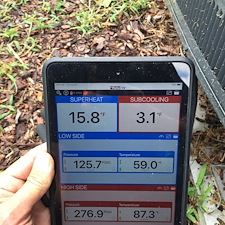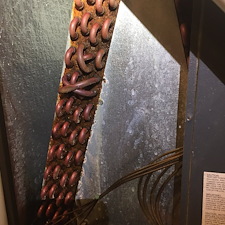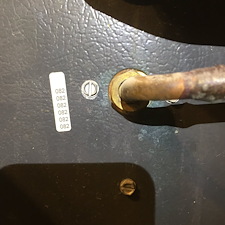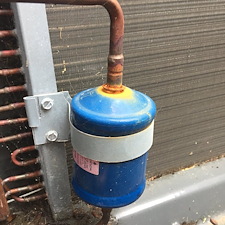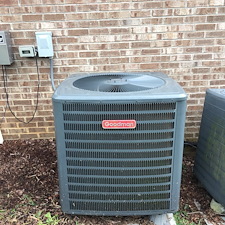Traditional Refrigerant Leak Search During an AC Repair in Johnson City, TN Located a Rusty Leaking Indoor Evaporator Coil
October 5, 2025
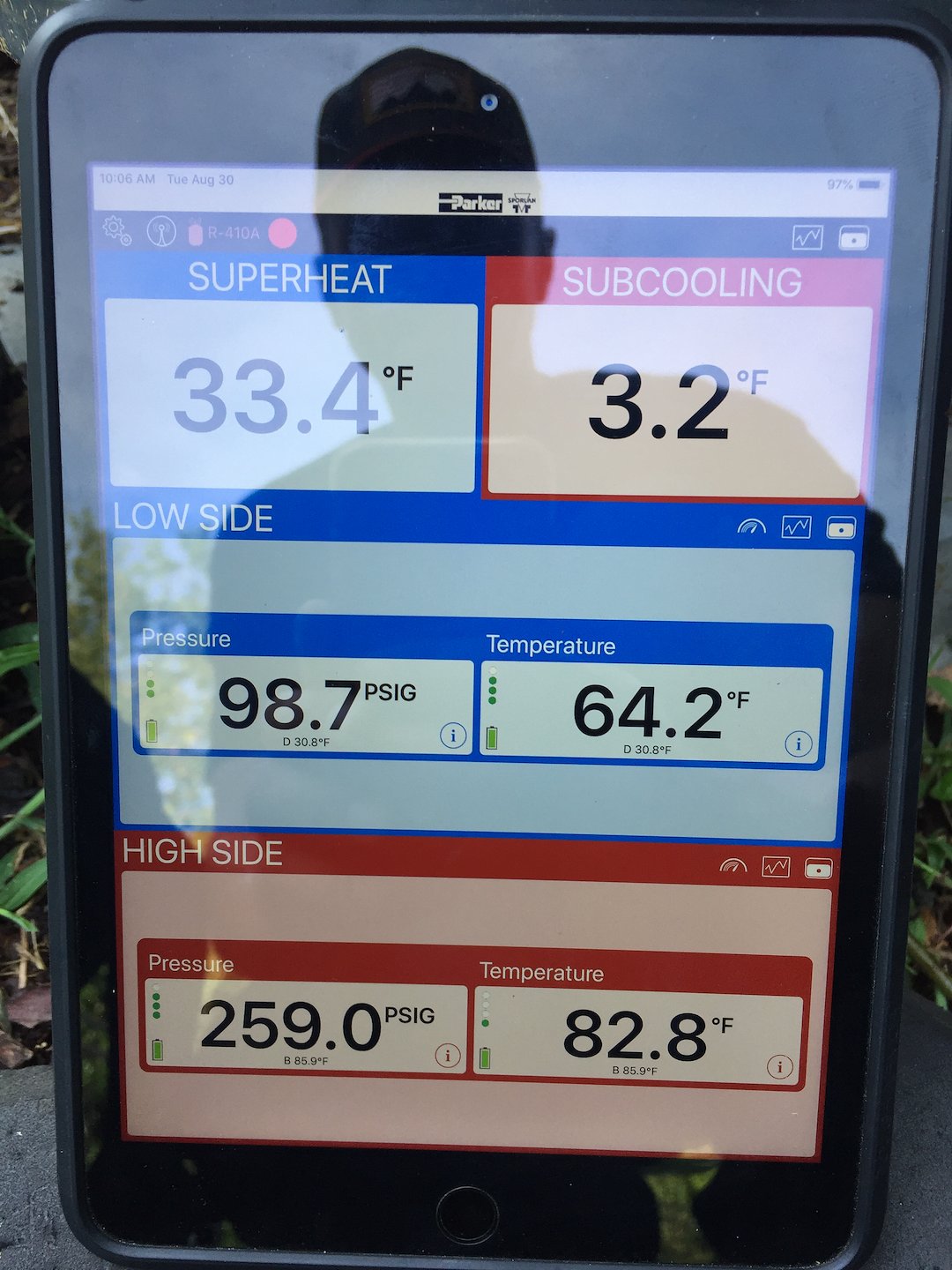
We received a call from a customer in need of an AC repair in Johnson City, TN. They stated that their AC unit for the first floor was not keeping up with the set point on their thermostat. We advised them to turn the system off until we got there.
When we arrived, we looked at the equipment that they had for their first floor HVAC. They had a 4-ton Goodman AC unit outside and a 4-to-5-ton evaporator coil sitting on top of a Goodman natural gas condensing furnace in the basement. We hooked up probes to the refrigerant circuit outside and fired the AC in cooling mode. We noticed that the AC unit was low on R410A refrigerant which is why it wasn’t keeping up with their cooling set point. We advised the customer that their AC unit had a refrigerant leak.
At this point there are several options that a homeowner can take. Do nothing and not have AC. Add refrigerant to the system so that it will cool again, but it will leak back out. Depending on the size of the leak it could last minutes, days, weeks, months, or even a year. A homeowner could also leak search the indoor and outdoor unit using traditional methods of locating refrigerant leaks (heated diode, ultrasonic, infrared, or refrigerant leak detector bubble solution). Also, you could add a UV dye to the system and let it run for a week or so and come back to locate the dye that has leaked out of the system along with the refrigerant you added with the dye. Another option is a full system isolation test which is expensive, but it will tell you exactly what part or parts of the system are leaking. The isolation test also checks the refrigerant line-set as well which is a more thorough and in-depth test of the entire system. Another option is to try a leak sealant while you charge the system back up. It can work or it might not. You also have to remember that the leak sealant is a foreign substance inside the machine and it doesn’t come from the manufacturer. If the sealant works you will continue to cool, if it doesn’t your system will stop cooling again. We have had some pretty good luck with the particular brand we carry on our van. There is also a sealant that has UV dye in it, so if it does leak back out you can search the system for the UV dye and locate the leak that way. The final option is to cut your losses and replace the HVAC unit.
We gave them the options listed above. They wanted to charge the system up so that they could use their AC. We reminded them that if you add refrigerant to a leaking system, it will leak back out, but they still wanted us to add refrigerant. Their system wasn’t flat on refrigerant, so charging it back up is a valid option and many homeowners go that route. If the system doesn’t have any refrigerant or very little left in it, you don’t want to take that route because it can leak out rapidly.
We added R410A refrigerant to the machine and calculated the proper refrigerant charge based on the target superheat method of charging because the indoor coil utilized a fixed piston metering device. We dialed the refrigerant charge in based on the current conditions inside the home and outside. The customer at that point decided to have us try to leak search the system utilizing a heated diode leak detector, ultrasonic listening device, and refrigerant leak detector bubble solution.
We started with the outdoor AC unit and could not find any refrigerant leaks. We searched the indoor coil which was very rusted out and found multiple spots on the indoor coil where the refrigerant was leaking out of the refrigerant circuit. We could not search the refrigerant line-set because the customer did not authorize a full system isolation test. An isolation test would include removing all of the refrigerant from the machine, pressure testing the outdoor AC by itself, pressure testing the indoor coil by itself, and brazing our refrigerant lineset into a continuous loop so that we could pressure test it by itself as well. Once everything is under pressure with access fittings and gauges hooked up, we monitor the system to see where we are losing pressure.
We let the customer know that they needed a new indoor evaporator coil in order to fix their leaking HVAC unit. We also made them aware that they could also have a leak in the line-set, but there would be no way to know that until we pressure tested the system after the coil replacement. After performing the coil swap we would pressurize the system with dry nitrogen to confirm that the system was holding pressure without losing it. The pressure test would include the outdoor AC, line-set, and indoor coil. If the system lost pressure, we would have to perform an isolation test in order to determine where else we were losing refrigerant from. If the system held pressure, that would mean that the indoor coil was the only thing leaking at that time.
If you live within our service area of Northeast Tennessee and are in need of an AC repair, please feel free to contact us. We would be happy to assist you with your HVAC unit. Stay safe and best wishes.
Location: Johnson City, TN
Project Image Gallery
Schedule Your HVAC Service in Johnson City, TN Today!
Or Fill Out Our Quick Form!

